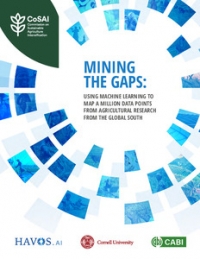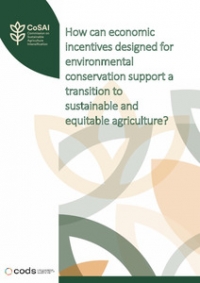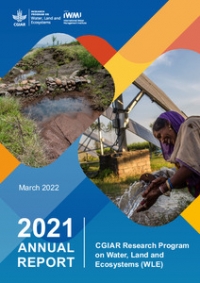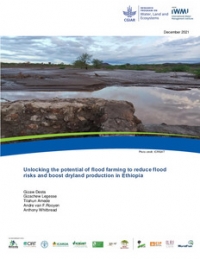Peter McCornick, Deputy Director General at IWMI, outlines key issues he hopes to see addressed at the The Economist Conference "Feeding the World: Asia's prospect of plenty" on September 27th in Hong Kong.
It is encouraging and timely to see efforts to raise the issue of food security, and while it is especially complex in Asia, I am optimistic that through a range of investments in the public and private sector--from research, to production, and through improving connections to markets, and rights of access to resources--that the farmers of Asia can collectively meet the challenges ahead.
Rapid economic, demographic and environmental changes are already increasing demands for food, feed, fiber and bio-fuels. Diets are shifting generally towards more water intensive foods such as animal products. Milk, meat, eggs, and fish, both from capture and aquaculture, require more water during production than other foods. These agricultural demands, along with the water needs for domestic use, industrial use, hydropower and fisheries, require trade-offs between sectors.

Is sustainable intensification possible?
A major question that has yet to be comprehensively addressed is can the required increased intensification of Asia’s agriculture be achieved without threatening the sustainability of the water and land resources, and ultimately the ecosystems?
The sustainability of many existing irrigation systems and traditional livelihood systems of the region, such as the rice-fish systems in major river basins, are increasingly at risk, and migratory fisheries and thereby regional food security, are threatened by disruptions to habitat coherence and ecosystem connectivity.
We are witnessing increasing competition for water in critical areas, especially during dry seasons, and yet significant spatial yield differences present opportunities to improve water productivity and diversification.
Improving agricultural water management
Ensuring sustainable intensification requires wide-spread adoption of improved agricultural water management approaches in both irrigated and rainfed systems. Irrigated agriculture is especially important in Asia, with more than 65% of the world’s irrigated land. Some of it is already under threat from over-pumping of groundwater, and yet other areas offer opportunities for the sustainable development of the same resource.
The large scale irrigation systems, which were the backbone of the original green revolution, are generally performing poorly, and yet we have notable exceptions, especially in China and Malaysia where such systems have been successfully revitalized so that the water productivity has reached levels similar to that in groundwater.
Managing water for agricultural intensification requires the adoption of more flexible approaches that:
- sustain groundwater resources where they are already reaching their limits,
- sustainably develop new resources,
- enhance the capacity of the existing large scale systems, and
- increase the role of small-scale and on-farm systems.
Improving the (water) productivity of agriculture requires investment in irrigation and intensification of rainfed concurrently with investments in education, research and improving access to markets.
Follow Peter McCornick at the conference:
Twitter: @PeterMcCornick, @Economist_FTW, #feedingtheworld, #FeedingAsia
Relevant Publications:
AgWater Solutions Synthesis Report
Improving water use in rainfed agriculture in the Greater Mekong Subregion
Revitalizing Asia's irrigation: to sustainably meet tomorrow's food needs























